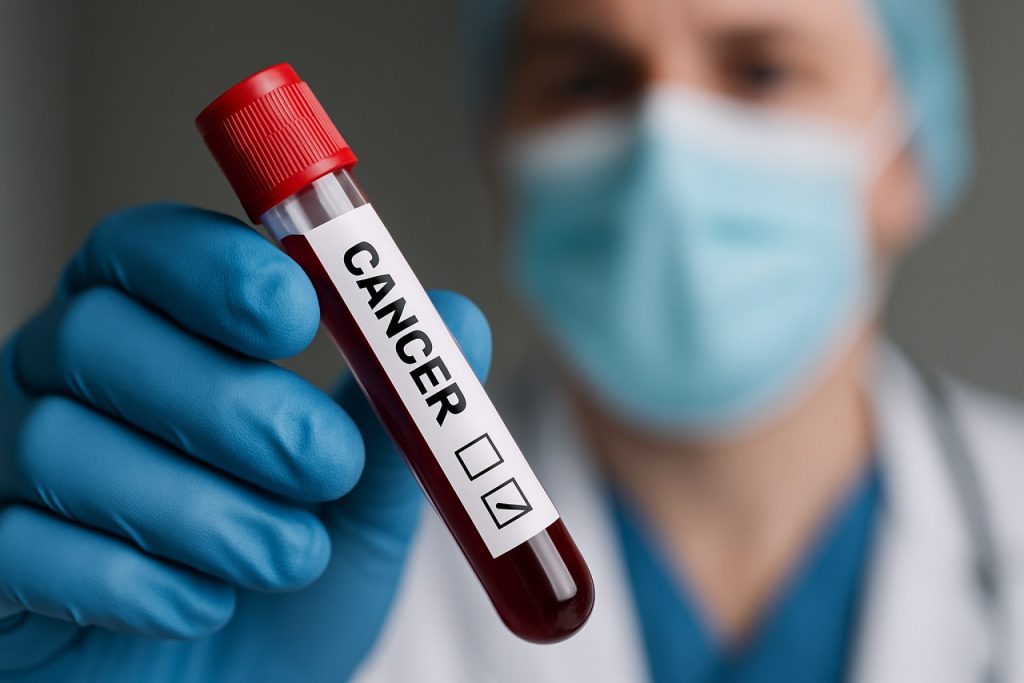
- Liquid biopsy uses a simple blood draw to detect cancer, offering a less invasive and more patient-friendly alternative to traditional tissue biopsies.
- Tumor DNA circulating in the blood is hard to detect in early-stage cancer, but advanced techniques now target epigenetic markers—chemical tags like DNA methylation—for increased sensitivity.
- Epigenetic signals, especially DNA methylation patterns, provide richer information than genetic mutations alone, enabling earlier and more accurate cancer detection.
- Innovative, PCR-free enrichment methods preserve fragile tumor DNA, allowing for more comprehensive analysis from minimal samples.
- Liquid biopsy can monitor cancer’s progression, therapy response, and tissue of origin, holding promise for transforming cancer diagnostics and patient care.
Beneath the glassy surface of a small vial of plasma, a revolution stirs. Laboratories around the world are racing to decode the secrets hidden in the thin wisps of DNA that drift through our bloodstream, promising a seismic shift in the way we detect and track cancer.
Traditional biopsies, dramatic in both their invasiveness and limits, are quietly ceding ground to a quieter rival: the liquid biopsy. Imagine monitoring the enemy from afar—gauging every shift and countermove without ever needing to breach the fortress walls. That’s the allure clinicians cannot resist. Instead of carving tissue, doctors can draw a simple tube of blood, painlessly scouting for clues that malignancies leave behind.
What are these clues? Tumor DNA—the genetic debris tumors scatter as they grow—has long been a quarry. But catching it early remains a Herculean task; in the first cautious steps of cancer, tumorous DNA in blood dwindles to almost nothing, nearly invisible among the cacophony of healthy DNA.
The latest frontier in this hunt isn’t in the genes themselves, but in subtle epigenetic markers—chemical tags, such as DNA methylation, that decorate our genetic code and reveal the secret history of each cell. Cancer leaves unmistakable epigenetic graffiti across the genome, and—crucially—these markers are scattered more abundantly than single mutations. Scientists are learning to scan the methylation landscape, unmasking cancers that would otherwise slip through the genetic dragnet.
The technology powering this leap is as meticulous as it is ingenious. Traditional methods, which use chemical treatments to unmask methylation, often destroy or bias what little tumor DNA is present. A new generation of enrichment systems—like Agilent’s PCR-free technique—renders a faithful portrait, preserving these methylation scars. This allows researchers to extract volumes of information from a single drop of plasma, mapping both genetic errors and methylation markers without compromise.
The game-changing advantage? Speed, sensitivity, and breadth. Researchers now chase more than mere presence or absence—they can gauge cancer’s trajectory, track its response to therapies, and even pinpoint its tissue of origin, thanks to tissue-specific methylation IDs. For doctors treating complex cases like prostate cancer, where individual point mutations aren’t always telling, these broader epigenetic signals open doors once firmly shut.
Scaling laboratory marvels into clinical realities remains an obstacle course. Amplicon-based methods—painstaking and slow—struggle to keep pace with high-volume clinical demands. New tools aim to leapfrog these barriers, streamlining workflows and slashing wait times.
The promise is tantalizing: a world where a routine blood test offers an early warning, launching doctors and patients into action before cancer tightens its grip. As teams adapt these techniques for the rigors of real-world medicine, the era of nervous waits and invasive biopsies grows closer to extinction.
The takeaway for everyone—from researchers to the patients anxiously awaiting answers—is clear: Liquid biopsies, powered by epigenetic insight, could soon turn the tide against one of humanity’s most tenacious foes, lighting the path toward earlier, less invasive, and more precise cancer detection.
To stay updated on advances in medical diagnostics and healthcare technology, visit Nature or Agilent.
Liquid Biopsies: The Game-Changer in Early Cancer Detection—10 Breakthrough Facts You Need to Know
—
Introduction: The Quiet Revolution in Cancer Diagnostics
Liquid biopsies—especially those analyzing epigenetic markers—are transforming cancer detection and management. While the source article covered the basics, here are essential, expanded facts, industry analysis, real use cases, actionable how-to tips, and expert-backed insights that every patient, healthcare provider, and industry watcher should know.
—
Hidden Facts & Industry Insights
1. Liquid Biopsies: What Are They Really Detecting?
– ctDNA and Beyond: Cell-free tumor DNA (ctDNA) makes up less than 1% of all cell-free DNA in plasma during early cancer stages—making it notoriously difficult to spot (Nature Reviews Cancer, 2020).
– Epigenetics vs. Genetics: Most blood-based tests have historically searched for mutations. Epigenetic signals (like methylation) provide a much richer source of data for early-stage detection (JAMA Oncology, 2023).
2. Real-World Use Cases
– Cancer Types: The most advanced liquid biopsy panels can screen for over 50 types of cancer—including pancreatic, ovarian, and lung—that traditionally evade early detection.
– Therapy Monitoring: Oncologists use liquid biopsies to monitor response to therapy, adjust dosages, and identify developing drug resistance months before traditional scans catch up.
3. Features, Specs & Pricing
– Assay Sensitivity: Top platforms now reliably detect tumors with as low as 0.01% mutant allele fraction.
– Turnaround Time: Latest tests (e.g., Guardant Health, Grail) promise results from a single blood draw within 7–14 days.
– Cost Considerations: While prices vary, single-test costs currently range from $500 to $2000—expected to fall with wider adoption (Frost & Sullivan, 2023).
4. How-To Steps—Patient Edition
1. Physician Consultation: Discuss suitability for liquid biopsy based on cancer type/background.
2. Blood Draw Collection: Sample is collected in outpatient setting—no surgery or anesthesia required.
3. Laboratory Analysis: Plasma DNA is extracted, sequenced, and analyzed via advanced bioinformatics.
4. Follow-Up: Review results with oncologist for diagnostic, monitoring, or risk assessment implications.
5. Pros & Cons Overview
Pros
– Minimally invasive—comfortable and very low risk.
– Enables real-time disease monitoring.
– May reveal origins and subtypes of cancers.
Cons
– Limited sensitivity in certain slow-growing or low-tumor-burden cancers.
– Standardization of methods is ongoing.
– Not yet a full replacement for imaging or tissue biopsy in all scenarios.
6. Reviews & Comparisons—Top Providers
– Grail (Galleri test): Screens for 50+ cancers; FDA Breakthrough Device.
– Guardant360: Focus on therapy selection in advanced solid tumors.
– Agilent: Advanced methylation platforms with PCR-free protocols.
Each has differing cancer coverage, turnaround, and pricing; compare with your provider for best fit.
7. Security, Privacy & Sustainability
– Patient Data Protection: HIPAA regulations in the U.S. apply; reputable labs use end-to-end encryption and de-identification protocols.
– Sample Handling: Rigorous standards minimize cross-sample contamination.
8. Market Forecasts & Industry Trends
– Future Market Growth: The global liquid biopsy market is projected to exceed $10 billion by 2027, with compound annual growth rates of 20%+ (MarketsandMarkets).
– AI & ML Integration: Machine learning models are now integral for sifting clinically relevant signals in the massive epigenetic data clouds.
9. Controversies & Limitations
– False Positives/Negatives: Early epigenetic tests can generate inconclusive results—mandating confirmatory tissue biopsy in some cases.
– Insurance Coverage: Reimbursement varies by geography and indication; check with your insurer.
10. Actionable Quick Tips for Readers
– Discuss liquid biopsy with your healthcare team if at-risk or in cancer surveillance.
– For best outcomes, pair liquid biopsy results with imaging and clinical context.
– Stay informed—advances are rapid. Reliable sources include Nature and Agilent.
—
Most Pressing Questions Answered
Q: Is a liquid biopsy as accurate as a tissue biopsy?
– Not in all cases—especially for initial cancer diagnosis or tumors shedding little DNA. It excels in ongoing monitoring and early risk flagging but may need confirmation.
Q: Who is eligible for a liquid biopsy?
– Most solid tumor patients, high-risk individuals, and those in therapy monitoring. Suitability depends on cancer type and medical history.
Q: Can liquid biopsies replace all cancer screening methods?
– Not yet. They’re rapidly improving, but best used in combination with traditional screening and risk assessment strategies.
Q: Are liquid biopsy results actionable?
– Increasingly so—especially in detecting minimal residual disease, therapy adjustment, and relapse prediction.
—
Conclusion & Recommendations
Liquid biopsies—supercharged with epigenetic innovation—are redefining cancer detection and management. While certain technical & cost hurdles remain, adoption is accelerating, especially for monitoring, early detection, and tailoring therapies. Stay proactive: if you or a loved one are navigating cancer risks or treatment, ask your doctor about the latest in liquid biopsy options, and follow the rapidly evolving landscape at resources like Nature and Agilent.
Quick Tip: Always ensure your liquid biopsy provider is certified and ask about the panel’s sensitivity for your specific cancer type—precision matters!
—
For the latest in medical diagnostics and health technology, bookmark reputable scientific sources and revisit them regularly to stay ahead of the curve in cancer care.



